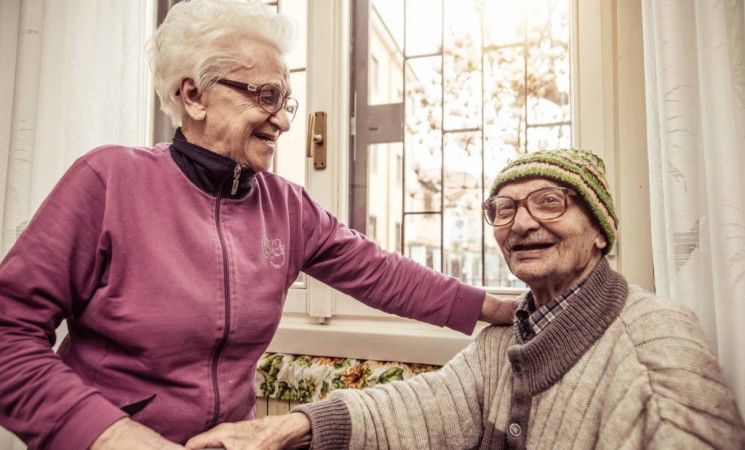Archived Content
This page is archived and provided for historical reference. The content is no longer being updated, and some of the information may have changed over time and could be outdated or inaccurate.

By Sara Moorman, Ph.D.
My undergraduate class happened upon an interesting puzzle while reading Leisureville by Andrew Blechman: Social gerontologists love intergenerational communities, but older people love age segregated communities.
Theorists from Erik Erikson to Matilda White Riley to Gunhild Hagestad and Peter Uhlenberg have suggested that healthy older persons will strive to contribute to the well-being of younger generations and that age segregation is detrimental to older persons’ productivity and social integration. Yet, empirically, older persons often choose to segregate themselves. Consider just one example: For the past 3 years, the fastest growing metro area in the United States. has been The Villages, Florida, a planned community for residents aged 55 and older. In 2016, 157,000 people live there. What do they know that gerontologists don’t?
Social gerontologists love intergenerational communities, but older people love age segregated communities
My graduate students and I began thinking about the types of social interactions older people might have in their neighborhoods. We envisioned a few possible scenarios. In an intergenerational neighborhood, an older person might have lots of opportunities to mentor younger adults, but might encounter ageist treatment. In a neighborhood populated mostly by other older persons, an older person might feel a stronger sense of inclusion in the community, but be isolated from broader culture. Anecdotal evidence that age composition affected neighborhood life mounted as we tried these ideas out on colleagues. One told me that the worst years of her life were spent as a young mother in a neighborhood of young families, where everybody knew everybody else’s business all of the time.
Empirically, older persons often choose to segregate themselves. What do they know that gerontologists don’t?
From there, we moved into a thorny set of questions about measurement and analysis. What is the best way to operationalize neighborhood age composition? For that matter, what is the best way to operationalize neighborhood? We used data from the National Survey of Midlife Development in the United States (MIDUS) matched with census tract-level data from the U.S. Census, so secondary data limited some of our measurements. Nonetheless, our final typology of neighborhoods achieved two things:
- First, it characterized neighborhoods by all age groups. A simple measure of the percentage of residents who were older persons would have ignored whether the remaining residents were primarily in late-midlife versus primarily college-aged, for instance. We hypothesized that the age of “everyone else” matters too.
- Second, our typology characterized neighborhoods relative to the age distribution of the United States. A simple measure of the percentage of residents who were older persons would have ignored the fact that if the spaces one inhabits are unsegregated, approximately one out of seven persons one sees would be 65 years old or older.
Our statistics revealed a significant association between the age composition of one’s neighborhood and one’s self-reports of health and psychological well-being. The types of social interactions people encountered accounted for this association. Specifically, neighborhoods with an age distribution representative of the United States, as well as neighborhoods that overrepresented older adults, were contexts in which residents of all ages experienced the most generativity and the highest levels of social cohesion in their social interactions. Generativity is a sense of purpose and productivity in one’s life, especially purposes directed toward others. Social cohesion refers to a sense of community. In turn, generativity and social cohesion promoted better self-reported health and higher psychological well-being, again, for residents of all ages.
Significant association between age composition of neighborhood and self-reports of health and psychological well-being
We look forward to expanding this research longitudinally to include “movers” and “stayers,” to elaborating gerontological theory on age segregation, and to improving our measurement techniques. Yet even the results of this paper have implications for policy: Older people bring real strengths to communities. So often, older people are seen as a detriment because of the costly services that they require, such as transportation and health care. This research shows that a critical mass of older adult residents boosts generativity and social cohesion, which in turn support health and well-being for all.
Read the Article
Mechanisms Linking Neighborhood Age Composition to Health
About the Author

Dr. Sara Moorman, a fellow of the Gerontological Society of America, studies health and well-being in later life as a function of social relationships. She is interested in empirical investigations of Matilda White Riley’s theories regarding age stratification versus age integration. She and her graduate students have focused thus far on age stratification within neighborhoods, the context in which retired older adults spend the majority of their time. When older adults live in neighborhoods that represent the age distribution of the United States, and when they live in neighborhoods that overrepresent older adults (relative to the age distribution of the United States), they experience the best self-reported health and psychological well-being. These effects appear to occur in part because of the social interactions residents experience in such neighborhoods, including opportunities for generativity and social cohesion. In future Dr. Moorman intends to continue to explore neighborhood age stratification, as well as to begin studying age stratification within personal networks of social support.








